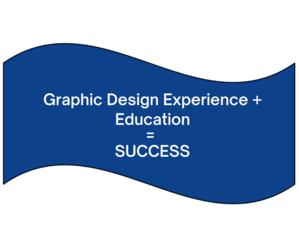Graphic Designer Job Descriptions – The Ultimate Guide
 Graphic designers play a crucial role in marketing and communications for a variety of businesses. From hospitals to colleges to government agencies, a graphic designer uses technology and artistic vision to help organizations share their message and their vision with the public. If you are a recent graduate with a degree in graphic design or are looking to enter the field, here are some tips to guide you in landing the job of your dreams.
Graphic designers play a crucial role in marketing and communications for a variety of businesses. From hospitals to colleges to government agencies, a graphic designer uses technology and artistic vision to help organizations share their message and their vision with the public. If you are a recent graduate with a degree in graphic design or are looking to enter the field, here are some tips to guide you in landing the job of your dreams.
Graphic Designer Key Responsibilities
A graphic designer needs to be competent in many areas. Here are some of the primary skills that you will encounter daily in this role.
Create Vision and Design Skills
Not surprisingly, one of the primary responsibilities of a graphic designer is designing.
Clients will provide you with a basic outline of what they want to communicate with their customers and will rely on you to develop and incorporate eye-catching logos and images with succinct and descriptive text.
You will need to be able to design a variety of communication materials, including web pages, brochures, and magazine covers.
Client Communication
The ability to effectively communicate with clients is central to the role of a graphic designer. In order to deliver a product that serves the intended purpose, you will need to understand the client’s vision for their business and how the current job illustrates it.
Researching a new client and examining their past communication materials will help you to understand their style and voice in order to match it in your assignment.
Additionally, it is crucial to be able to understand and apply the client’s feedback in your design edits in order to accomplish their goal and capture their vision.
When it comes to the bottom line, employers want to see cost-effective strategies and solutions. Highlighting this on your resume will undoubtedly make an impact.
Using Technology and Software
In the modern era of graphic design, you will utilize a variety of technology and tools as you create the logos, images, and layouts required from your clients. It is expected that you will be skilled and knowledgeable in photo editing and publishing software such as Adobe Creative Suite programs.
You should also be prepared to learn and adapt to new technology as it is developed and becomes preferred by employers and clients.
Graphic Designer Job Location
Graphic designers can work in nearly any location and have opportunities to work in a variety of settings. If you work for one employer, you will most likely work in an office or a studio with other members of the company’s creative team. A variety of employers require full-time graphic designers on their staff, including government agencies, newspaper organizations, and publishing companies.
In some cases, though, you may be able to work remotely from your own home or private studio space. Positions that offer telecommuting opportunities will allow you to expand your job search beyond your immediate region and can prevent a need for relocation.
Depending on your position, you may be required to travel in order to meet and consult with clients in order to fulfill their needs.
Another option as a graphic designer is to work on a client-by-client basis through a firm or by contracting on your own. This offers you more flexibility in the projects that you take on, as well as with the location in which you work.
Graphic Designer Experience and Education
 As noted above, graphic designers require very specific skills and training in order to complete the technical aspects of their positions. Therefore, a minimum amount of education and experience is typically required to work within the field in order to ensure that you are able to keep up with the demands of the position.
As noted above, graphic designers require very specific skills and training in order to complete the technical aspects of their positions. Therefore, a minimum amount of education and experience is typically required to work within the field in order to ensure that you are able to keep up with the demands of the position.
Education Requirements
A position in graphic design typically requires a bachelor’s degree in fine arts. An undergraduate course of study in graphic design is available at most universities, liberal arts colleges, and technical schools.
While organizations hiring graphic designers are likely to be strict about education requirements, a bachelor’s degree is not always necessary to be employed as a graphic designer. If you are contracting with clients yourself and are competent with the technology and have a strong portfolio, you may be able to bypass the need for obtaining an undergraduate degree.
Experience Requirements
While education and training with graphic design software are crucial, experience with applying your acquired skills creatively is arguably most important to potential employers and clients.
Apprenticeships and internships can provide a variety of content for you to showcase in a portfolio as well as practice with the technology.
You can also mock-up samples of your work that convey your creativity and skill.

Graphic Designer Salary
According to the U.S. Bureau of Labor Statistics https://www.bls.gov/oes/current/oes271024.html, the median average salary for graphic designers in May 2019 was $56,510, though yearly wages in some locations or organization could approach $89,000.
California and New York employ the most graphic designers of any state in the country and have the highest median pay, above $60,000.
Graphic Designer Resume Tips
Since employers and clients want to see evidence of your successful work, any field experience can amplify your resume. Detail any internships or apprenticeships and include samples from your work in the portfolio.
If you are unable to complete a guided work experience, freelance graphic design jobs can help boost both your resume and portfolio.
